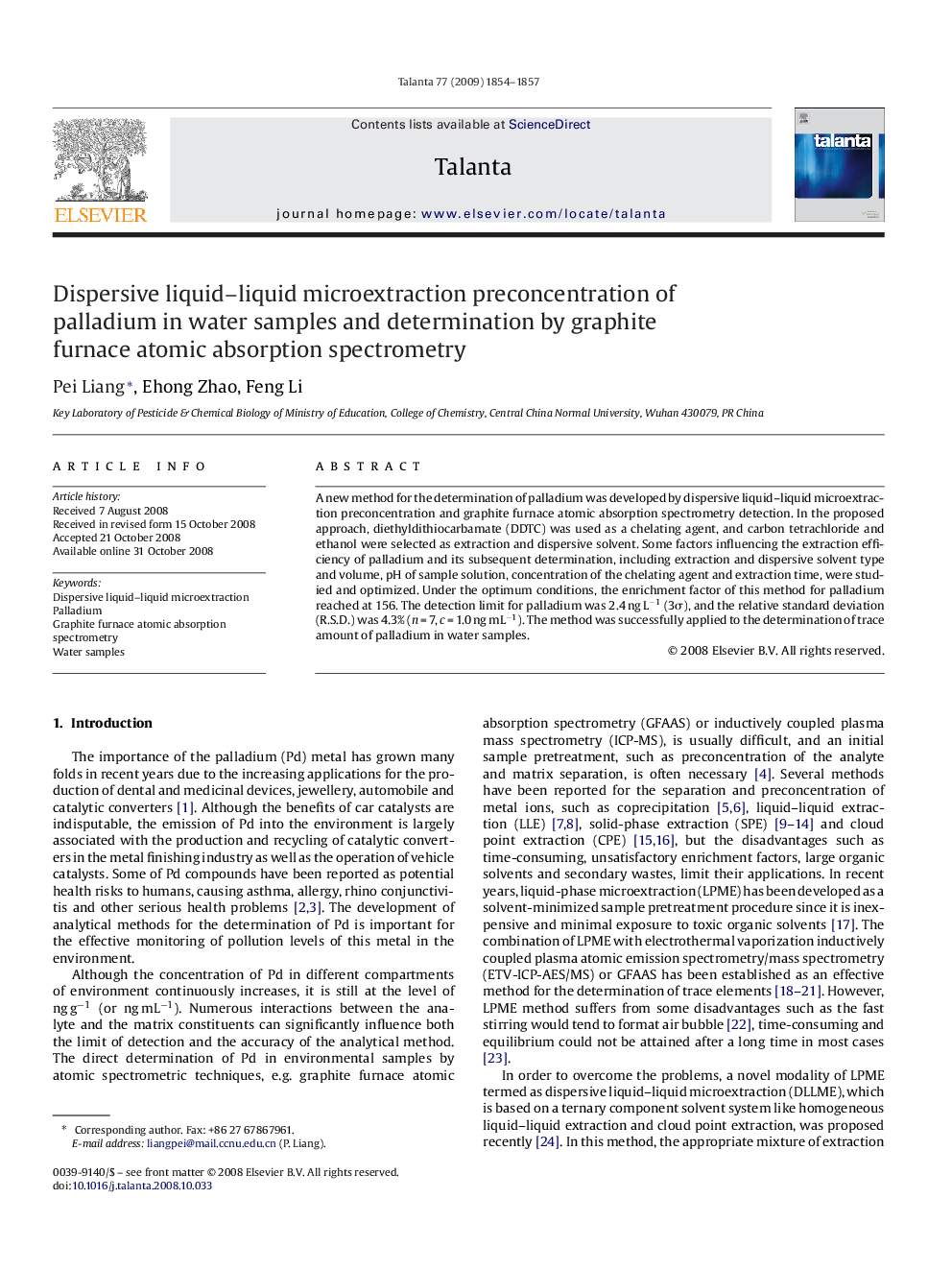| Article ID | Journal | Published Year | Pages | File Type |
|---|---|---|---|---|
| 1245250 | Talanta | 2009 | 4 Pages |
A new method for the determination of palladium was developed by dispersive liquid–liquid microextraction preconcentration and graphite furnace atomic absorption spectrometry detection. In the proposed approach, diethyldithiocarbamate (DDTC) was used as a chelating agent, and carbon tetrachloride and ethanol were selected as extraction and dispersive solvent. Some factors influencing the extraction efficiency of palladium and its subsequent determination, including extraction and dispersive solvent type and volume, pH of sample solution, concentration of the chelating agent and extraction time, were studied and optimized. Under the optimum conditions, the enrichment factor of this method for palladium reached at 156. The detection limit for palladium was 2.4 ng L−1 (3σ), and the relative standard deviation (R.S.D.) was 4.3% (n = 7, c = 1.0 ng mL−1). The method was successfully applied to the determination of trace amount of palladium in water samples.
